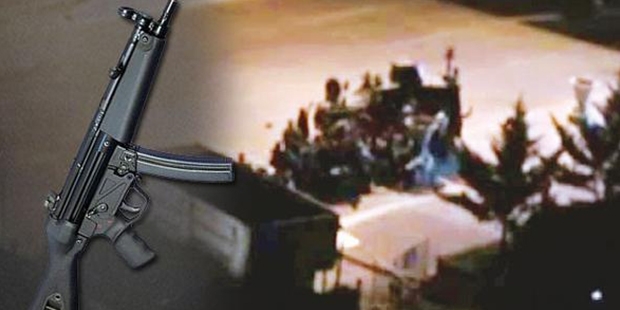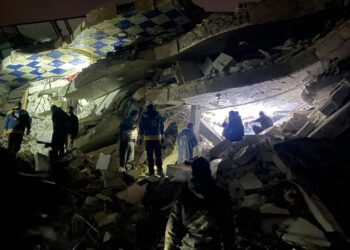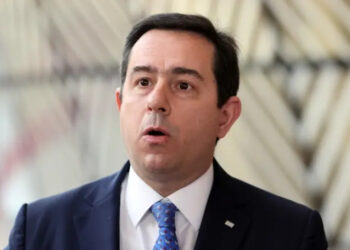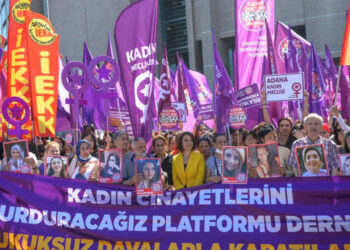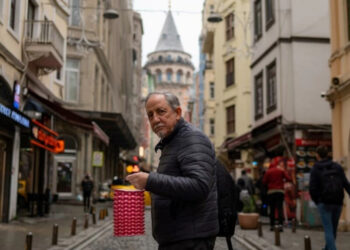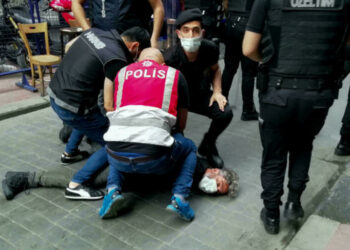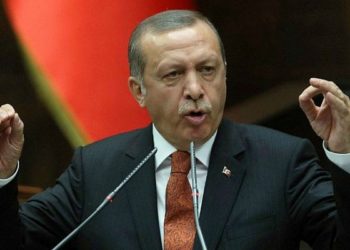A mundane murder case unusually grabbed the attention of national media, not for who was the killer or how many people died in the shooting in an incident last summer. It was the weapon used in the killing of Cesur Degirmencioglu, 18, that perplexed journalists and prosecutors investigating the case. No less important was the puzzling question of the rise of armed citizens and militias, a disturbing pattern that emerged after the coup.
Equally significant, the murder case also brought the subject of armed people and their potential role during the coup attempt into public focus. To what extent they played a role, if any, in the killing of some of 249 people on July 15 and July 16 when renegade troops swept streets, engaging in bloody clashes with police and people, is a matter to be reckoned with in full details.
* * * * *
When Mustafa Maras (37) was returning from a picnic with his girlfriend in rural Ankara, Turkey’s capital, on July 30, he had a tense moment with Idris Degirmencioglu (23) and his younger brother Cesur over right-of-way dispute on the road. The verbal quarrel soon escalated into a fight that later involved using a gun. Mr. Maras picked up MP-5 from the backseat of the car and opened fire at the brothers.
At a hearing at the 10th Ankara High Criminal Court on May 31, Mr. Maras revealed how he obtained MP-5, a submachine gun, which is only used by police forces and prohibited for sale to citizens.
To the astonishment of the court judges, Mr. Maras said he got the gun from police during July 15 coup attempt. “These guns were handed out in front of Ankara Police Department on July 15. I took it from there,” he said in a revelation that sent shockwaves across the public.
The Hurriyet daily’s report into the case generated a controversy and new interest into the night of the putsch amid ongoing coup trials.
In his defense, Mr. Maras told the court that he never used the gun before, until the deadly encounter with Degirmencioglu brothers on July 30 during a brawl near Sarisu village in Cubuk district of Ankara.
He first fired at Idris Degirmencioglu, then fired 3 rounds against Cesur Degirmencioglu who he claimed pointed a rifle toward at him. He claimed he acted in panic and fear.
The young Cesur was killed at the scene of the fight. In his own version of the story, the elder brother Idris, who was seriously wounded but survived, did not corroborate Mr. Maras’s account. He said Mr. Maras deliberately targeted them while they did not pose any threat against him by wielding any sort of weapon.
What stunned the court was Mr. Maras’s possession of a gun normally unavailable to private use, except for law enforcement officials and police.
Turkey’s Police Department says citizens cannot obtain the gun. When the story broke this week, the peculiar public and media reaction was something of an apprehension.
There is no permission for MP-5 sale as it falls into the category of automatic guns which are reserved for security forces, not citizens.
But if it is true that Mr. Maras obtained the gun from police during coup night, it points to a vexing problem that intrigues opposition politicians and the public. How many weapons did police hand out to people during coup night? Has the police ever traced the weapons it delivered to people, has it re-collected from them once the coup crumbled? What was the role of civilians during clashes? Did they actively take part in the armed skirmishes between police and the rebel troops?
Did they involve in any killing? These are the questions remain deeply unnerving. To assuage public anxiety, the Office of Ankara Governor issued a media statement to shed a light on the issue. It acknowledged that scores of weapons were distributed during coup night without keeping a record of them. But weapons were only given to police who showed their police IDs, rejecting handing out MP-5s to ordinary citizens.
The Governor’s Office said those weapons were re-collected after the end of the military putsch, but one was reported missing. A directive had been issued by National Police to all police departments across the country to trace the missing gun, the statement said.
When a small faction of military officers within the Turkish army commandeered tanks and fighter jets to forcefully remove an elected government on July 15, President Recep Tayyip Erdogan issued a call to arms to the nation to join the country’s police forces. Under President Erdogan’s banner, his supporters confronted putschist troops in Istanbul and Ankara.
It seems that many Mustafa Maras-like people became voluntary and had themselves armed by the police to push back putschist troops. One of the riddling elements of the coup night was deaths of civilians. Apart from troops firing at civilians at the Istanbul Bosporus bridge, and jets bombing Parliament, police special forces headquarters, and Parliament; dozens of civilians were believed to be killed under suspicious conditions. The role of armed people and militia-like groups loyal to the government in those killings needs to be enlightened.
The specter of July 15 coup and the scourge of violence still hover over the national consciousness. The legacy of the failed coup remains contested today for a divided society. And the fallout of the coup still remains with the society.
What makes the Hurriyet report more relevant and unpleasant is the bulk of other reports about the emergence of semblance of paramilitary organizations loyal to Mr. Erdogan and his government. It is seen as a potential bellwether for the rapid radicalization of youth in aftermath of the coup, a bearer of bad tidings in the social landscape given hyperpolarization in the society.
In a video below, a government supporter and Mr. Erdogan’s says in an interview aired on Ahsen TV, an Islamist online TV channel, that the government has made easier for them to access to automatic rifles, guns and sorts of weapons. Normally, such weapons are not available to citizens. But that appears to have changed.
Armed islamist men interviewed by islamist TV say "we were unprepared on 15 July, preparing for what's next, the state is supporting us." pic.twitter.com/JGBHzTP3hk
— Turkey Untold (@TurkeyUntold) June 9, 2017
Last year, Ankara Mayor Melih Gokcek called on government supporters to arm themselves. In another case, a leaked audio recording of Orhan Uzuner, father of President Erdogan’s daughter-in-law, reveals that the ruling Justice and Development Party (AKP) has been forming a militia to defend the government in the case of another coup attempt.
In a speech to party elites in January, Mr. Uzuner talked about how the party is forging a nationwide network to respond against another putsch in lightening speed. He said every preparation were being made for communication and immediate action. “We have weapons for use when needed,” he told the audience at a gathering.
Sinan Ogan, a nationalist politician who broke with Nationalist Movement Party (MHP), said in February that National Intelligence Organization (MIT) is providing military training to some of the AKP supporters in Anatolia.
Apart from this covert efforts, there are also publicly known moves made by the government. To make matters complicated, the government took a step last month to form neighborhood vigilantes in cities to provide security. The opposition parties met the move to establish a strong 7,000 citizen guards in neighborhoods with incredulity and furor. For them, it amounts to a de facto militia force, which will operate under political directions from the government whenever it needs to employ them.
Though the rationale for setup of such agency is grounded on the security needs in neighborhoods, it is far from dispelling fears of political opponents.
While Turkey had traditionally relied on the support of village guards in the southeast in the fight against Kurdistan Workers’ Party (PKK) insurgents, there is no historical precedent for a similar structure in the western parts of the country.
Turkey nonetheless had a history of political violence that wrought havoc across the entire country during the 1970s, while PKK insurgency has swept the Southeast since 1980s, unleashing a vicious cycle of violence that killed thousands, ravaging cities.
Leftist militant organizations also challenged the state through violent attacks against police and the military. It is for this reason that there had long been a bipartisan staple of state policy to establish a strict control over public access to weapons, limiting citizens’ purchase of guns.
Submachine or machine guns are off limits to individuals according to the law. But, all seems to have changed in aftermath of the failed coup. Feeling insecure, the AKP government loosened the procedure for individuals, mostly its supporters, to obtain sophisticated guns. Dozens of social media photos corroborate the worst of the fears: AK 47s and other types of automatic guns are much more common, easily available and even are in occasional use in family disputes or fights among individuals.
********
This article was possible thanks to your donations. Please keep supporting us here.


